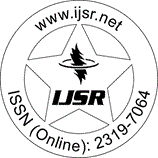Downloads: 12
India | Yoga and Meditation | Volume 14 Issue 3, March 2025 | Pages: 555 - 563
A Comparative Analysis of Yoga Practices and their Effects on Autonomic Nervous System Functionality
Abstract: The growing interest in integrative health practices has led to an increased focus on the physiological impacts of yoga, particularly regarding its effects on the autonomic nervous system (ANS). This paper presents a comparative analysis of various yoga practices namely Hatha, Vinyasa, and Kundalini evaluating their respective effects on the functionality of the ANS. The ANS, which regulates involuntary physiological functions such as heart rate, digestion, and respiratory rate, plays a crucial role in the body's stress response and overall homeostasis. Utilizing a mixed - methods approach, this study synthesizes findings from experimental and observational research conducted over the past two decades, examining both qualitative and quantitative data. Key physiological parameters such as heart rate variability (HRV), cortisol levels, and subjective measures of stress and well - being were assessed in participants engaged in distinct yoga practices. The analysis reveals significant variations in how different styles of yoga influence ANS activity, particularly in regard to parasympathetic and sympathetic responsiveness. Hatha yoga, characterized by its emphasis on physical postures and breath control, demonstrated pronounced enhancements in parasympathetic activity, indicating reduced stress and improved relaxation. In contrast, Vinyasa yoga, which incorporates a more dynamic flow of postures, was associated with heightened sympathetic activity during practice, suggesting an invigorating effect that can enhance physical stamina while potentially elevating stress levels. Lastly, Kundalini yoga, which combines movement, breath work, and meditation, exhibited unique results, significantly modulating both branches of the ANS, thus promoting a balanced physiological state. Through this comparative lens, the paper elucidates the nuanced interactions between distinct yoga practices and the ANS, providing insights into how these variations can be harnessed for specific psycho - physiological outcomes. Implications for clinical practices, particularly in stress management and mental health, are outlined, emphasizing the potential of tailored yoga interventions to optimize autonomic functionality. This study contributes to the existing body of literature by not only highlighting the specific impacts of different yoga styles but also advocating for a more personalized approach in the prescription of yoga for therapeutic purposes.
Keywords: Yoga Practices, Autonomic Nervous System Function Comparative Analysis
How to Cite?: Siddappa Naragatti, "A Comparative Analysis of Yoga Practices and their Effects on Autonomic Nervous System Functionality", Volume 14 Issue 3, March 2025, International Journal of Science and Research (IJSR), Pages: 555-563, https://www.ijsr.net/getabstract.php?paperid=SR25311190555, DOI: https://dx.doi.org/10.21275/SR25311190555
